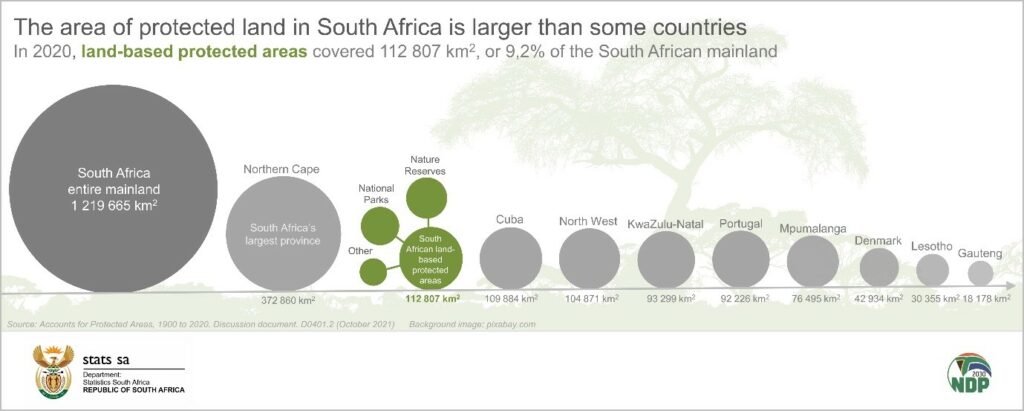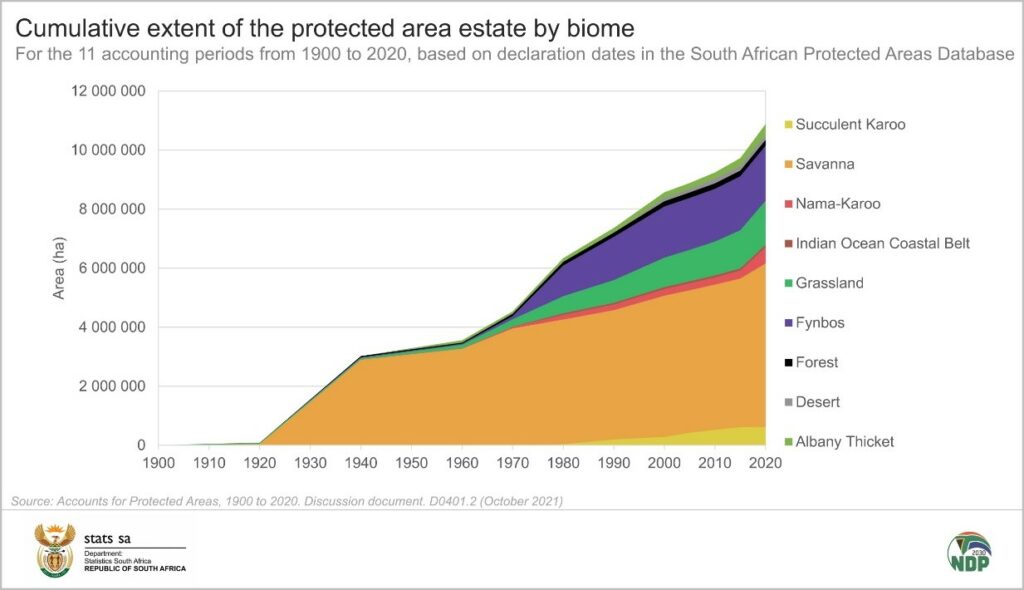South Africa formally protects a total area that is slightly larger than North West province (which is 104 882km2), to conserve its rich biodiversity. The country wants to increase this by a half a percentage point a year until 2036, doubling protected areas from 16% to 30%.
During the United Nations Biodiversity Conference (COP15) in Kunming, China, last week, South Africa called for a new global finance facility for biodiversity when the conference adopted a new post-2020 framework to save nature.
The framework is to implement a new global agreement on biodiversity, described as the Paris Agreement for nature. Countries party to the agreement failed to meet the previous targets set out in the 2011 to 2020 framework,” said Environment, Forestry and Fisheries Minister Barbara Creecy at the COP15 roundtable on “closing the finance gap”.

“The current state of protected areas in South Africa faces serious funding and capacity challenges that have been compounded by the Covid-19 pandemic.
“Protected area estate relies heavily on nature-based tourism for its primary revenue stream.
“Our department is working with our national treasury to include biodiversity considerations in the work on the green taxonomy of our country and this process is recommending actions to enhance the regulatory framework and unlock market barriers for biodiversity positive financial flows.
“We are also working with development finance institutions such as the Development Bank of Southern Africa, to enhance their investment criteria to include biodiversity risk.”
South Africa’s protected areas are largely public financed and generate revenue through tourism.
An assessment on the state of the world’s biodiversity last year found that “nature and its vital contributions to people, which together embody biodiversity and ecosystem functions and services, are deteriorating worldwide. Seventy-five percent of the land surface is significantly altered, 66% of the ocean area is experiencing increasing cumulative impacts, and over 85% of wetlands have been lost.”
South Africa has a leading protected and conservation areas programme, and according to state entities collaborating on assessing this, it understands the value of nature’s role in protecting people and biodiversity from the effects of climate change.
Statistics South Africa’s Natural Capital Accounting and Valuation of Ecosystem Services project evaluated protected areas and found that if protected land in the country were its own province, it would be larger than either North West (104 882km2), KwaZulu-Natal (94 361km2), Mpumalanga (76 495km2) and Gauteng (18 176km2). It looked at protected areas from 1900 to 2020.
Stats SA released the report in October to coincide with World Habitat Day.
“With urban centres indirectly responsible for the bulk of greenhouse emissions, protected areas can act as a counterpoise by capturing and storing carbon from the atmosphere.

“These expanses of land, rich with biodiversity, may become one of our biggest tools against climate change,” the Stats SA project coordinators said.
But all provinces are not equal and although protected area estates have expanded in all provinces and in all biomes across South Africa, it has not done so evenly.
Nature reserves and national parks make up the bulk of protected areas and take up 45% in most provinces with the exception of Mpumalanga and the Northern Cape.
The desert biome — in the Richtersveld in the Orange River Valley — is the second smallest and least protected. This biome was not protected until the end of the 2000 accounting period. By the end of 2020, 22.4% of the desert biome was protected.
Biomes in the Northern Cape consist of the Nama-Karoo, succulent Karoo, savanna, fynbos and grassland.
“The savanna biome is the largest in South Africa and has been well represented in the protected area estate for a long time,” the report said. It includes well-known protected areas such as the Kruger National Park and Pilanesberg Game Reserve.
Biodiversity conservation is expected to play a role in safeguarding people from the effects of climate change.
Christopher Trisos, a researcher at the Africa Climate Development Initiative at the University of Cape Town, said that restoring South Africa’s unique ecosystems would be beneficial for adaptation. Trisos, whose focus is on climate risk, highlighted how the country is endowed with wetlands, grasslands and savannahs.
These ecosystems slow down and absorb water and provide runoff into water sources.
This is evident in the Western Cape where fynbos provide water runoff into streams.
But thicket, forest and fynbos biomes are at risk because of, among other problems, poor land management, erosion and pollution.

Some of these protected areas are battling to control invasive species and human interference such as at Lake St Lucia in the Isimangaliso Wetland Park in KwaZulu-Natal, where the actions of estuary management seem to be in conflict with scientific recommendations.
The uMhlanga Lagoon near Durban is a disaster site since agri-chemical producer UPL’s warehouse was set ablaze during the July riots. The full scope of the chemical spill into the protected area, that has resulted in beaches being closed, is unknown. Preliminary findings from an investigation led by the department of environment forestry and fisheries found that UPL flouted critical safety and environment regulations given the type of product it stored. It has recommended criminal investigations get underway to determine liability.
Tunicia Phillips is a climate and economic justice reporting fellow, funded by the Open Society Foundation for South Africa